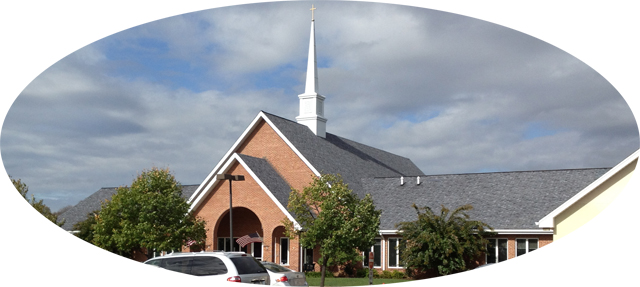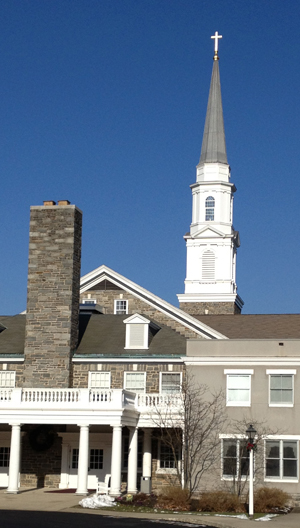 Trinity Lutheran Church, Norristown
Trinity Lutheran Church, Norristown
Three Ambassadors set out today for our 75th visit to a member church in the Southeastern Pennsylvania Synod (SEPA) of the Evangelical Lutheran Church in America (ELCA).
Today we chose Trinity, Norristown. The address puzzles us. We traveled through Norristown, Norriton and Jeffersonville and a bit into the country, but still the address is Norristown. We have already visited Grace, which really is in Norristown and there is another church listed as in Norristown also, but they seem to have let their internet url run out!
Our first step in visiting churches is to study their website. Trinity’s website is well-designed, but like most church websites, it is all about them, missing out on the power of the web to evangelize.
We arrived early and waited in the parking lot for about 20 minutes. We planned to attend the 11 am service. There had been an early service with education and fellowship sandwiched in between, so the parking lot was well-populated. We passed through doors flanked by American flags. This made one of our ambassadors very happy.
Trinity, Norristown, supports three pastors. The husband and wife team of Rev. Kim Guiser and the Rev. Dr. Asha M. George-Guiser, and newly called associate pastor, Rev. Althea Tysk.
We were greeted upon entry by Rev. Kim Guiser who explained that we would be attending a contemporary service. We entered a surprisingly small sanctuary for the size of the property. The church is set far back from the road. They have plenty of land to build and in fact are planning a capital campaign toward that end.
The TREND REPORT for his parish has not been updated in four years and for several years before that, so it is difficult to decipher trends. Their average attendance is listed as 252 but in this second service there were about 70.
The only thing contemporary about the service was the music, which was elaborately staged with a ten-member choir, piano, percussion, violin and two guitars. The production seemed to be enjoyed by most, but it was rather a shock to our sense of worship. Redeemer is every bit as contemporary but more contemplative with silence built in. There was no quiet in this service! Singing was uninviting since the band and choir were amplified beyond the ability of an individual’s voice to be heard. But the musicians worked very hard throughout the service and were well-rehearsed, seamlessly bridging every divide in the service.
The bulletin was sparse with reliance on projection for the order of the day. This is not uncommon. We used projection a bit in our church but mostly to showcase religious art and poetry before the service. There is something strange about looking up and to the left or right during prayers. The focal point of worship definitely changes. But you don’t spend a fortune on paper!
The finest moment in the service was an enthusiastic announcement made by a boy who was pumped to speak about an upcoming bell choir concert. Ryan was so comfortable in his message that when the pastor tried to explain what the boy had already ably explained, the boy took the microphone from the pastor and finished his message himself. Get ready, folks! This is the church of the future!
Outside of music, the service was as old-fashioned as can be and high church. The language used was Roman—Mass, Homily, Eucharist as opposed to Service, Sermon and Communion. The distribution of elements in communion was done the old Catholic way—not allowing recipients to touch the host. The historic reason for this is that the people were not trusted to touch the host.
The gestures of Catholicism were also prevalent—crossing, bowing and a tight decorum among the altar servers.
They did not follow the lectionary that both the Catholic and Lutherans follow. The lesson for this week was Jesus and the Ten Lepers. They read Luke 4, traditionally read the First Sunday in Lent. It is the story of the Temptation and the story of Philip and the Eunuch. Our pastor, who was with us, thought the verses chosen to be odd. He was following in his Bible. They used no Old Testament Lesson or Psalm.
Pastor Asha George-Guiser spoke about the “blasting of barriers.” She referenced her own marriage as an Indian Christian married to a white, Chester County farmboy from a non-religious family and the difficulty she experienced marrying outside her family’s customs. She encouraged the “blasting” of barriers of prejudice.
Once again, we see the disconnect in the thinking of clergy. The clergy of SEPA Synod, in which the Guisers are quite active, have condoned the creation of barriers in our neighborhood. These barriers were built on impermeable foundations of prejudice fueled by greed. They locked the Christians of East Falls out of their property and made our ministry and lives very difficult and painful. The actions were self-serving, hateful, and hurtful. Four years of pretending otherwise have not lessened this. But SEPA clergy preach about justice and doing right—while remaining hopelessly mired in injustice.
To Pastor Kim Guiser’s credit, we were introduced at the end of the service and he did not stumble over our name, something Bishop Burkat and several other pastors we have encountered have been unable to do! We were from Redeemer-East Falls. See, it’s not so hard. We do exist!
After worship a former Redeemer member approached one of our Ambassadors. He is the son of former church leaders and son-in-law of one of the matriarchs of our church. He was totally unaware of what was going on in his hometown. Our Ambassador pointed him to our website. I couldn’t help but remember how his mother-in-law, Betty Little, was always able to negotiate peace when there were disagreements within the church. SEPA could use her skills!
Trinity has a thriving preschool (as Redeemer would like to have and is fully prepared to open, if SEPA ever rightfully returns our property and restores our ministry).
Trinity is intentionally trying to develop the skills and volunteer service of members. They are having a service sign-up event in a week or so. They seem to be concentrating on a book, Outlive Your Life, which was referenced several times in worship. This may be the reason for the departure from the lectionary.
We wonder, is there is an opening for a muralist, two retired pastors, an architect, a finance expert, a hospitality expert and a communications expert with credentials in education leadership, and a blog coordinator? (Redeemer’s Ambassadors—all locked out of the ELCA).


